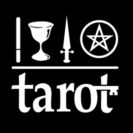The Knowledge and Conversation with one’s Holy Guardian Angel is relatively unambitious – I regularly say hi to neighbours as I walk down the street, but I have never had a conversation as such. Abramelin is probably the greatest influence on modern magical practice, but unfortunately the ‘Bible’ as translated by McGregor Mathers was the worst version available. It’s not Mather’s fault, better versions appeared only recently. I recommend The Book of Abramelin: A New Translation by George Dehn. In it you will discover that demons and devils do not exist. Furthermore, any evidence for the Kabbalistic Tree of Life is tenuous – the best is Tipherah, or beauty which appears in one of the magical squares. Sorry to disappoint.
To me, the HGA is a nod to monotheism, which is a strange obsession to polytheistic obsessed Thelemites. In reality, Dehn’s version sees the Guardian Angel (“Holy” is not there), as a stepping stone to working with the Spirits, which comprise the Four Kings at the top, then the eight Dukes, and then the servant spirits, which are numerous. The Guardian Angel is a personification of something more Divine, a link to the Divine.
Rather than an ultimate goal, the achievement of the HGA is merely a stepping stone to something greater. Apart from the powers described in Abramelin, there is a greater function: spiritual service to the world. The exemplar of this aspiration may well be The Heart of the Master by Aleister Crowley, or Khaled Khan as he chose to be known by in that work. Ignoring the detritus biographers of Crowley delight in, we can see much his life as his struggle to attain to the Secret Masters (another simile for the HGA in plural). Written in Tunis in 1925, The Heart of the Master deserves greater attention.
For students of Tarot and the Book of Thoth, The Heart of the Master is a revelation, for while Thoth was started in 1938, parts of the book were already written (OK, you could say Crowley recycled his writings, but that is probably not entirely fair). Unlike almost every other book on the Tarot, the divinatory meanings of the Major Arcana are in a separate section right at the back of the book in Appendix A, “The behaviour of the Tarot: it’s use in the art of divination”, after he describes the Opening of the Key Spread, and the title for the section on divinatory meanings (although that phrase does not appear) is “General characters of the Trumps as they appear in use”. Crowley makes the student work just a bit harder, by only identifying the Atu through their numbers, a verse and then the divinatory meaning. While obfuscation may be par for the course in all things Crowleyana, there is a twist in the tail, for those verses for the Major Arcana originally appeared in The Heart of the Master under the title “The Two and Twenty Secret Instructions of the Master”.
Tarot as means to attaining the HGA pervades Thoth Tarot; Crowley identified Aiwass, the author the Book of the Law, as his Holy Guardian Angel, and early on he was particularly satisfied to find a spelling of Aiwass that had a gematria of 78, although Thelemites prefer a different numeration. Nevertheless, there is this Invocation in the Book of Thoth:
Aiwaz! confirm my troth with Thee! my will inspire
With secret sperm of subtle, free, creating Fire!
Mould Thou my very flesh as Thine, renew my birth
In childhood merry as divine, enchanted Earth!
Dissolve my rapture in Thine own, a sacred slaughter
Whereby to capture and atone the Soul of Water!
Fill Thou my mind with gleaming Thought intense and rare
To One refined, outflung to Naught, the Word of Air!
Most, bridal bound, my quintessential Form thus freeing
“From self, be found one Selfhood blent in Spirit-Being.”
